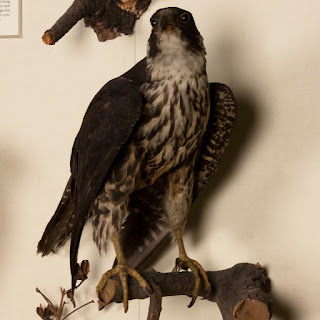Hunting
with eagles is a traditional form of falconry
found throughout the Eurasian steppe, practiced by Kazakh
and Kyrgyz people
in contemporary Kazakhstan and Kyrgyzstan, as well as diasporas in Bayan-Ölgii, Mongolia,
and Xinjiang,
China.
Though these Turkic people are most famous for hunting with
golden eagles, they have been known to train northern
goshawks, peregrine falcons, saker falcons,
and more.
Terminology:-
In both Kazakh
and Kyrgyz, the two primary languages of Central
Asian falconry, there are separate terms for those who hunt with birds of prey
in general, and those who hunt with eagles.
In Kazakh, there are two general
terms for people who capture, train, and hunt with various birds of prey:
"qusbegi" and "sayatshy". Qusbegi comes from the words
"qus", meaning "bird", and "bek", meaning "lord",
the title thus literally translating as "lord of birds." In Old
Turkic, "kush begi" was a title used for the khan's most respected
advisors, reflecting the valued role of a ruler's court falconer. "Sayat"
is a noun used to describe falconry in general, and the word for
"falconer" is formed by adding the ending -shy, a suffix used for
professional titles in Turkic languages. Similarly, the Kazakh word for golden
eagle is "bürkit", and the word for "hunter with eagles" is
bürtkitshi. By analogy, the word for "hunter with goshawks" is
qarshyghashy, from the word for goshawk, qarshygha.
In Kyrgyz, the general word for
people who capture, train, and hunt with various birds of prey is
"münüshkör". A falconer who specifically hunts with eagles is a
"bürkütchü", from the Kyrgyz word for golden eagle,
"bürküt".
History of Falcon Hunters
Khitans:-
In
936-45 AD the Khitans,
a nomadic people from Manchuria, conquered part of north China. In 960 AD China was conquered by the
Song dynasty. From its beginnings, the Song dynasty was unable to completely
control the Khitan who had already assimilated much of Chinese culture.
Throughout its 300-year rule of China, the Song had to pay tribute to
the Khitan to keep them from conquering additional Song territory. Despite
the fact that the Khitans assimilated Chinese culture, they retained many
nomadic traditions, including eagle hunting.
Jurchen:-
The
hai dong qing was an important breed of hunting eagle for Jurchen
tribes. The Khitan extorted this kind of eagle from Jurchen but ended in
revolt.
In
1207, the Kyrgyz nomads surrendered to Genghis Khan's
son Jochi.
Under Mongol
rule, the Kyrgyz preserved their nomadic culture as well as eagle falconry
tradition until the 1990s. Archaeologists trace back falconry in Central Asia
to the first or second millennium BC.
Kazakhs:-
Kazakh
eagle hunter in Altai Tavan Bogd National Park,
Mongolia.
During the communist period in Kazakhstan, many Kazakhs fled for Mongolia,
settling down in Bayan Ulgii, an area that has been designated for the Kazakhs
of Mongolia today. Kazakhs (Altaic Kazakhs or Altai-Kazakhs) living in Bayan-Ölgii Province of Mongolia continue
to hunt with eagles today. There are an estimated 250 eagle hunters in the
Western Mongolian province. Their falconry custom, so-called 'horse-riding
eagle falconry', is unique in practice only with trained Golden Eagle (Aquila
chrysaetos daphanea) on horseback. Their hunting target is almost limited to
Red Fox (Vulpes vulpes) or Corsac Fox (Vulpes corsac). In the first week of
October, 70 eagle hunters gather for the annual Golden Eagle
Festival of Mongolia. They use eagles to hunt foxes and hare during
the cold winter months when it is easier to see the gold colored foxes against
the snow. Many Kazakh traditions have been preserved by the Kazakhs in
Mongolia, eagle hunting being amongst them. Although the Kazakh government has
made efforts to lure the practitioners of these Kazakh traditions back to
Kazakhstan, most Kazakhs have remained in Mongolia.







No comments:
Post a Comment